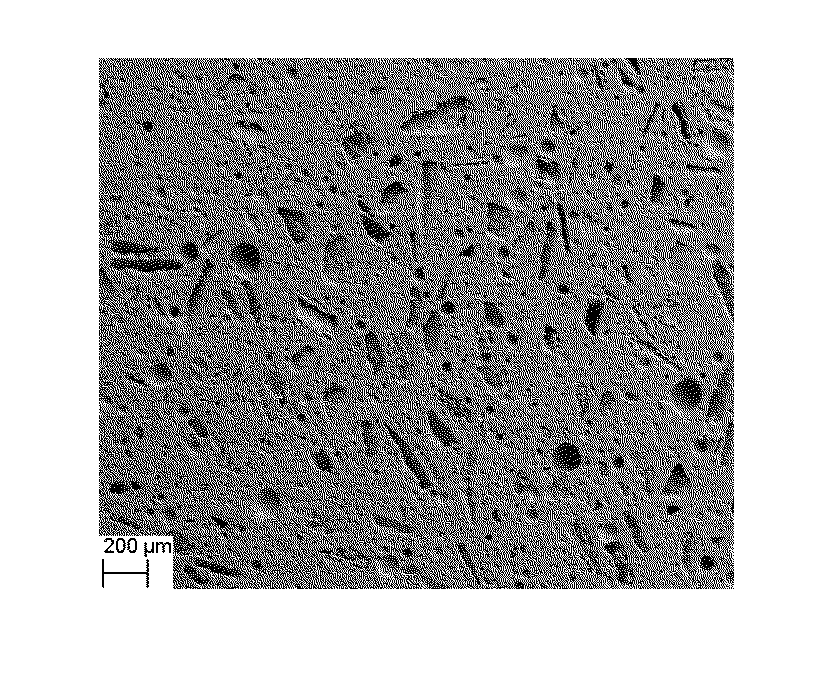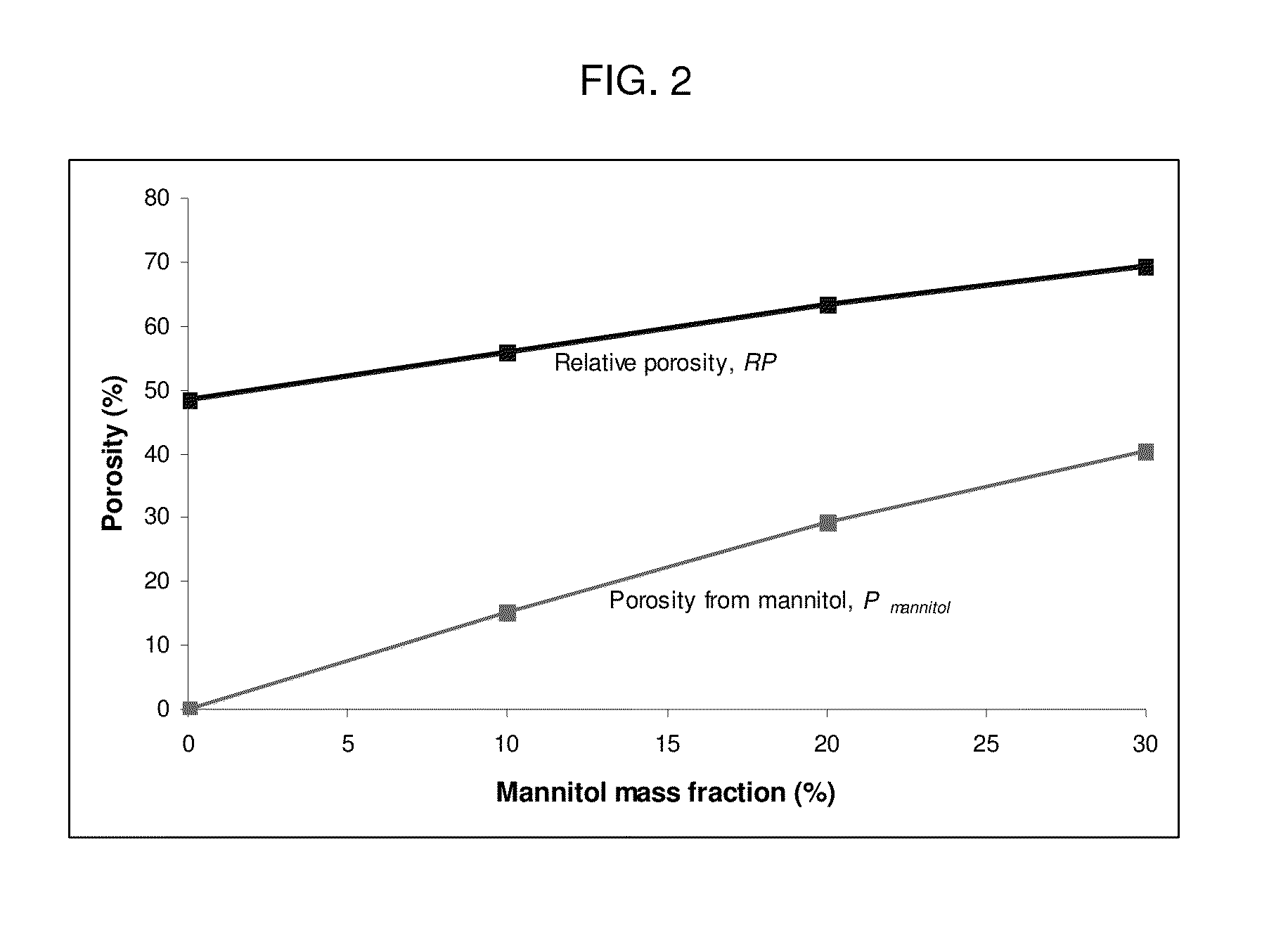Hydraulic cements with optimized grain size distribution, methods, articles and kits
a technology of hydraulic cement and grain size distribution, applied in the field of hydraulic cement, can solve the problems of high cost, high cost, and high cost of cement injection, and achieve the effects of improving pore size distribution, biological response, and easy and efficient delivery
- Summary
- Abstract
- Description
- Claims
- Application Information
AI Technical Summary
Benefits of technology
Problems solved by technology
Method used
Image
Examples
example 1
[0031]The example shows how properties such as injectablity, compressive strength and porosity can be controlled by varying the MCP particle size. By using a smaller a particle size, the injection force increases as well as the compressive strength whereas the porosity of the set cement decreases. Inversely, by using a larger particle size, the injection force decreases as well as the compressive strength and the pore size distribution of the cement shifts towards larger pores.
Cement Preparation
[0032]The cement consisted of monocalcium phosphate (MCP, Alfa Aesar) and β-tricalcium phosphate, mean particle size 12.9 μm measured by laser diffraction (β-TCP, Sigma), in a molar ratio of 1:1. The MCP was sieved in order to obtain the following particle sizes; <100 μm, 100-200 μm, 200-400 μm, and 400-600 μm. MCP was also used as received, containing all the mentioned particle sizes as well <5% of particles larger than 600 μm, hereby referred to as ALL. Glycerol (anhydrous) was used as mixi...
example 2
[0039]This example shows how the addition of mannitol to the cement composition affects the porosity, setting time and mechanical properties of the set cement. With no added mannitol, the porosity of the set cement is 50%, and with the addition of 30% mannitol, the porosity increases to ˜70%. The results show that it is possible to control the porosity of the set cement via addition of pore forming agents. The cement is intended to be used either as in vivo injectable material or to harden in molds outside the body and then implanted in hardened form.
Cement Preparation
[0040]The cement consisted of an equimolar mixture of mono calcium phosphate (MCP, Alfa Aesar) and β-tri calcium phosphate (Sigma). Glycerol was used as mixing liquid. Mannitol was used as the porogen, particle size <400 μm. The mannitol powder was combined with the premixed powder at mannitol / (mannitol+premixed powder) mass fractions of 0%, 10%, 20%, 30%. The powder was then mixed thoroughly with glycerol at a powder ...
PUM
| Property | Measurement | Unit |
|---|---|---|
| Grain size | aaaaa | aaaaa |
| Grain size | aaaaa | aaaaa |
| Grain size | aaaaa | aaaaa |
Abstract
Description
Claims
Application Information
 Login to View More
Login to View More - R&D
- Intellectual Property
- Life Sciences
- Materials
- Tech Scout
- Unparalleled Data Quality
- Higher Quality Content
- 60% Fewer Hallucinations
Browse by: Latest US Patents, China's latest patents, Technical Efficacy Thesaurus, Application Domain, Technology Topic, Popular Technical Reports.
© 2025 PatSnap. All rights reserved.Legal|Privacy policy|Modern Slavery Act Transparency Statement|Sitemap|About US| Contact US: help@patsnap.com



